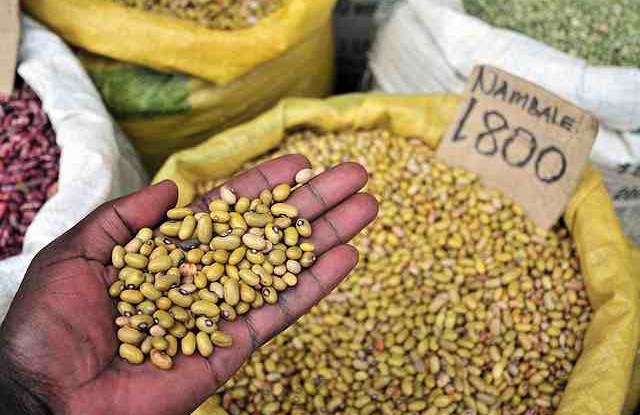LONDON, United Kingdom (30 March, 2012)_Innovative tree-planting techniques that amp up levels of soil organic carbon, an indicator of soil quality, are being encouraged on agricultural land in West Africa and the Sahel to strengthen food security in the region.
“Soil carbon provides important support to food security by maintaining soil fertility for agricultural productivity,” said Johnson Nkem, the author of the recent CIFOR study on soil organic carbon’s role in improving agricultural product quality in West Africa.
Yet the primary soil types in West Africa are the arable Alfisols and red-clay Ultisols, which have lower soil fertility levels compared to expanding clay-rich Vertisols.
“[Alfisols and Ultisols] are unable to support high intensive and continuous cultivation, except if there is improvement in soil organic carbon, which will boost soil fertility,” Nkem said.
Nkem says innovative ways of tree planting to improve soil carbon include the ‘demi lune’, and ‘cordon piere’ techniques, which are commonly used in the Sahel in Africa.
Both techniques help retain soil moisture and fertilizer such as manure around the seedling, nurturing initial growth. These measures also aid long-term moisture retention around the base of the tree seedling, which encourages soil microbial activities.
He also advises growing and retaining trees in cropping or pastureland. “The soil used for crops and pasture can increase soil carbon levels, following the net gains of subjecting the soils to a dynamic process of adding and removing organic materials.
Growing plants with deep-rooted systems also have the potential to increase soil organic carbon especially at deeper soils depths, he adds.
Carbon at deeper depths is more stable and less prone to microbial breakdown, the process where microbes break down carbon into carbon dioxide which is then released into the atmosphere, as the microbial population is much higher in topsoil than subsoil.
Agriculture accounts for approximately 21 percent of the continent’s GDP in Sub-Saharan Africa and it is an essential source of employment in rural areas, constituting 63 percent of the population.
Climate change, however, is estimated to severely impact on agricultural production, including access to food in many African countries. By 2020, yields from rain-fed agriculture could be reduced by up to 50 percent in some countries, which the Intergovernmental Panel on Climate Change says will adversely affect food security and exacerbate malnutrition.
The Commission on Sustainable Agriculture and Climate Change issued a comprehensive report calling for decisive action to tackle food insecurity at the Planet under Pressure conference this week.
Their recommendations encourage global investment in sustainable agriculture to operate within a ‘safe pace’ for people in the planet so that we “balance how much food we produce, how much we consume and waste and how much agriculture further contributes to climate change”, explained South African Commissioner Bob Scholes from the Council for Scientific and Industrial Research (CSIR).
A high level of soil carbon improves soil quality by increasing the levels of nitrogen, phosphorus and potassium in the soil. It also minimizes these minerals from leaching following heavy rainfall, a characteristic of the tropics, and improves soil’s physical structure, protecting it from wind and water erosion.
Just a 1-milligram increase of soil carbon on degraded cropland is expected to increase crop yield increase by 20 to 40 kilograms per hectare for wheat; 10 to 20 kilograms per hectare for maize; and 0.5 to 1 kilograms per hectare for cowpea, the CIFOR report says.
The use of carbon credits at the national or sub-national levels is also important to improving carbon storage.
“Providing financial incentives to farmers in making the transition to low-input production practices that support the buildup of soil organic carbon that in turn drives productivity, will greatly reduce the amount of new emissions attributed to agricultural production,” Nkem said, who was the former global coordinator of CIFOR’s four-year Tropical Forests and Climate Change Adaptation initiative, which is producing research for policy processes in countries such as West Africa to boost forest ecosystems for their role as important providers of goods and services.
But he advises to implement incentives with caution. “Listing soil organic carbon for trading may have undesirable consequences on food security,” he said, adding that a crop product chosen to enhance soil organic carbon might not necessarily be a priority crop for addressing food security.
“Just like organic products, there should be funding support as incentives, or to increase pricing for low-input agricultural production practices, that do not increase carbon dioxide emissions, but instead increase soil organic carbon levels.”
We want you to share Forests News content, which is licensed under Creative Commons Attribution-NonCommercial-ShareAlike 4.0 International (CC BY-NC-SA 4.0). This means you are free to redistribute our material for non-commercial purposes. All we ask is that you give Forests News appropriate credit and link to the original Forests News content, indicate if changes were made, and distribute your contributions under the same Creative Commons license. You must notify Forests News if you repost, reprint or reuse our materials by contacting forestsnews@cifor-icraf.org.
